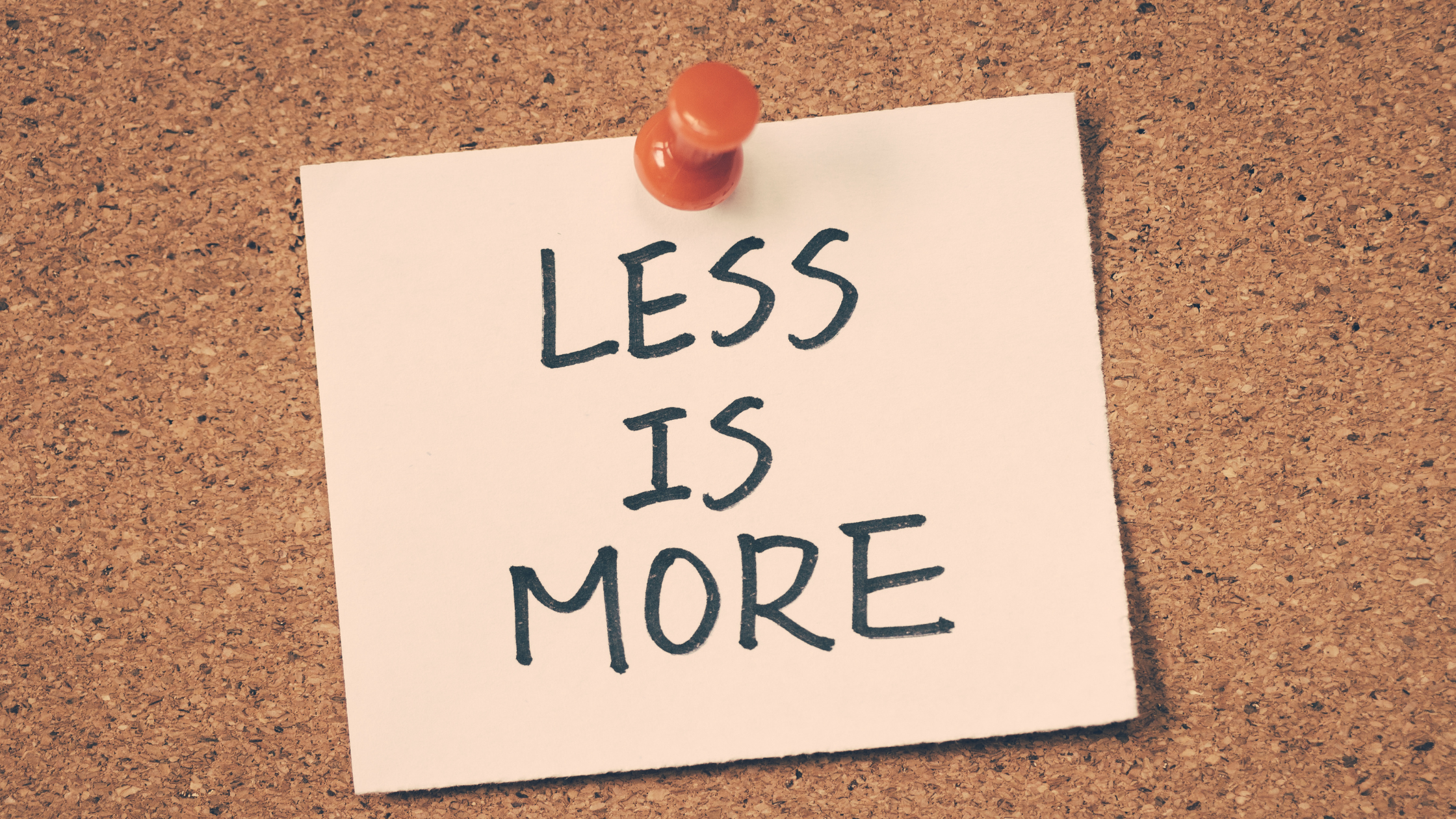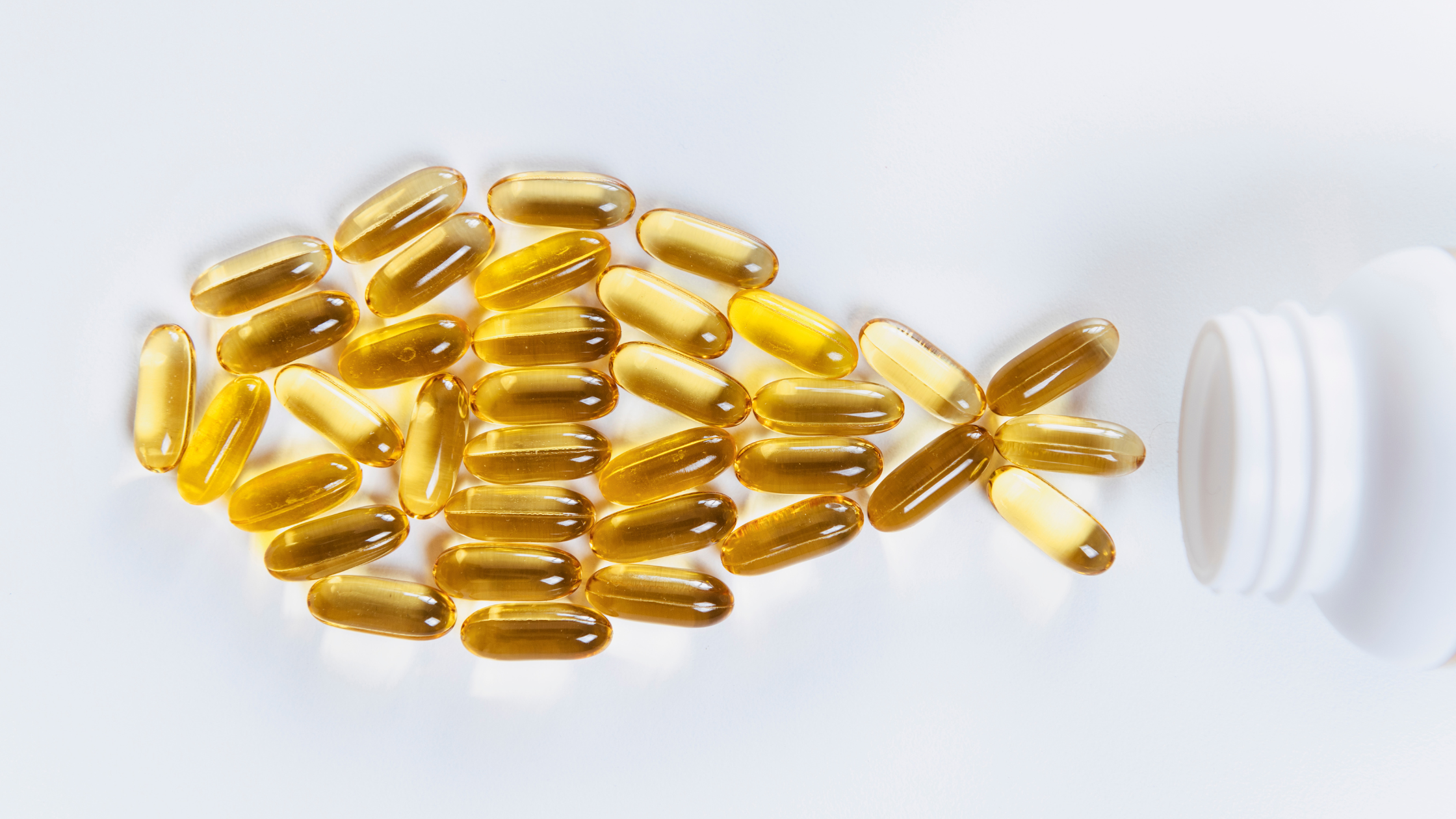Lower Your Blood Pressure Using These 9 Effective Methods
Tye Medical Incontinence Products
For more information about the author, click to view their website: TYE Medical
Jun 13, 2025
Florida - Sarasota, Bradenton & Charlotte Counties
Email US
Click to Email UsIt takes more than prescription medication to lower or control blood pressure, although they play a vital role in treatment. Other dietary and lifestyle changes can be instrumental in maintaining a healthy blood pressure. Before your doctor increases your medication dosage or adds another prescription to your treatment, he might recommend other changes in your eating habits or lifestyle, such as limiting sugar and alcohol, increasing exercise, and getting better sleep.
All of these and more can help set you up for success for lowering blood pressure, especially as you age. High blood pressure, also known as hypertension, often has no recognizable symptoms but is a major risk factor for heart disease and stroke.
Most healthy adults should aim for a blood pressure reading below 120/80 mm Hg. Your blood pressure is considered high at 130/80 or above. Anything in between these ranges is considered “elevated” blood pressure and means you are at risk for developing high blood pressure. But this isn’t inevitable.
Here are 9 effective methods to lower your blood pressure.
1. Get Adequate Exercise

Exercise is a key ingredient for lowering blood pressure and can help you manage it long term. According to research, both aerobic and resistance training positively affect blood pressure and can even lower it for up to 24 hours after exercising.
The key is to get “regular” exercise, meaning that it’s part of your daily routine. It’s about regularly increasing your heart rate and breathing so that over time your heart is strengthened. A stronger heart pumps with less effort, putting less pressure on your arteries. This means lower blood pressure.
So how much exercise is required to affect cardiovascular health? You should aim for 30 minutes per day, five days per week. That’s 150 minutes of moderate-intensity exercise weekly. Moderate intensity exercise is defined by your heart rate during a work out. Anything below this range is too low to benefit cardiovascular health and anything above it is unnecessary. If you are exercising for health, these are the target heart rate ranges.
| Age (years) | Target Heart Rate Range (beats/min) |
| 50 | 85-119 |
| 55 | 83-116 |
| 60 | 80-112 |
| 65 | 78-109 |
Other than intentional exercise, you can also increase activity by doing the following:
- Using the stairs
- Walking instead of driving
- Working around the house
- Gardening
- Bike riding
- Playing a sport
But be sure to clear any new exercise routine with your doctor to be sure you are healthy enough for moderate-intensity workouts.
2. Manage Your Weight

Extra body weight strains your heart and cardiovascular system, because it makes them work harder. This creates more pressure inside your arteries and can raise blood pressure. If you’re overweight with a body mass index (BMI) over 25, it can help to lose 5-10 pounds. Losing weight may lower your blood pressure and your risk for other health problems.
There are three major components to lowering BMI:
- Be more physically active
- Eat less
- Eat a healthy diet
3. Eat Less Sugar and Refined Carbs

Cutting back on sugar and refined carbs can help you lose weight while lowering blood pressure. One study found that people who are overweight or obese who followed a low carb and low fat diet dropped their diastolic blood pressure (bottom number) by about 5 points and their systolic pressure (top number) by about 3 points after just six months.
You can start by replacing some of the refined carbs with more whole grain varieties and foods that are less processed. Be sure to read labels and notice the sugar content in common foods you eat. It’s often best to eat fewer prepackaged foods as these often contain more simple carbs and sugars.
Instead, snack on produce and include more lean protein in your diet.
4. Eat More Potassium and Less Salt

Eating a diet high in salt can increase your risk for high blood pressure. But if you eat more potassium and cut back on salt, you can lower your blood pressure. Science hasn’t determined why salt impacts blood pressure, but it’s believed to have something to do with water retention and inflammation in blood vessels could be factors.
Potassium helps your body eradicate salt and even relieves some of the pressure in your blood vessels. Think of it as a counterbalance to salt and its effects. Cutting back on salt and adding more potassium to your diet can notably lower blood pressure over time.
High potassium foods to incorporate into your diet:
- Dried fruit (apricots, prunes)
- Milk and yogurt
- Lentils and kidney beans
- Vegetables like tomatoes, potatoes, and spinach
- Fruit like watermelon and bananas
If you have kidney disease, talk with your doctor before increasing potassium in your diet, as it could be harmful.
5. Manage Stress

Managing stress benefits your overall health and positively affects your blood pressure. Stress has a direct impact on your body and its systems. It’s important that you learn to recognize the symptoms of stress and its triggers. It’s best to eliminate sources of stress when possible. But much of what causes your stress probably can’t be set aside. In this case, you’ll need to learn to manage stress in a healthy way.
Consider some of these methods and determine what works best for you:
- Taking a walk (or getting exercise)
- Reading a book
- Practicing deep breathing
- Listening to music
- Meditation or prayer
These are ways you can decompress from daily stress and set your mind elsewhere. This type of relief can relax your body and keep your blood pressure from rising. Chronic stress, especially when poorly managed, keeps your body in an anxious state with an elevated heart rate and increased blood pressure.
6. Get Plenty of Quality Sleep
When you’re sleep deprived you’re at greater risk for high blood pressure. Blood pressure often lowers a bit while sleeping, giving your system a rest. But if you haven’t slept well or enough, your body doesn’t get this needed break. And without it, pressure continues to build. If you do this night after night, it can have long-term effects on your blood pressure.
Here are some tips for getting better sleep:
- Keep a regular sleep schedule
- Exercise (but not too close to bed time)
- Leave devices outside your bedroom
- Sleep in a cool, dark room
- Avoid caffeine and alcohol too close to bedtime
7. Limit Processed Foods

A strict definition of “processed foods” is any food that has been changed from its natural state. Technically, just cutting and washing a food is a change to its natural state, and so not all processed food is bad. But often, when this phrase is used, it’s referring to overly processed foods that make them less healthy. This type of processed, pre-packaged food often includes additives like preservatives, sugars, fats, and not-so-natural ingredients.
“Bad” processed foods include ingredients you don’t want that can also increase blood pressure and negatively affect your health. They often contain higher levels of sodium, sugar, saturated fat, and inflammatory chemical ingredients.
Common examples include:
- Processed meats (lunch meats, sausage, ham, etc.)
- Fried foods or fast food
- Processed snacks (chips, crackers, cookies, etc.)
And be careful about foods labeled “low fat” since they often include more sugar or salt to compensate for the lower fat content. They may be lower in fat but aren’t necessarily healthy overall.
8. Try Supplements

You can try supplements to help manage blood pressure. Some widely used options include:
- Omega-3 fatty acids or fish oil
- Whey protein
- Potassium
- Magnesium
While you may see some benefits from supplement use, there is not enough scientific evidence to verify that most of them can decrease blood pressure.
Be sure to check with your doctor before using any supplement as some conditions and medications might cause complications.
9. Limit Alcohol

According to research, your heart rate can increase for up to 24 hours after drinking just an ounce of alcohol. It appears that blood pressure drops for the first 12 hours but then increases. The average alcoholic beverage contains about half an ounce of alcohol.
And don’t be fooled by red wine. While the idea that it’s heart healthy has been widely spread, the America Heart Association warns that too much can be harmful. Instead, limit your alcohol consumption, even red wine, to two standard drinks per day for men and one drink per day for women, if you drink at all.
One drink or serving of alcohol is considered to be:
- One 12-ounce beer
- 4 ounces of wine
- 1.5 ounces of 80-proof spirits
- 1 ounce of 100-proof spirits
Considering general health and common medication interactions, it may be best to skip the alcohol completely.
Blood Pressure Management Is Key
Managing your blood pressure as you age is a critical component of aging well. While you can try supplements and take medications when needed, these alone won’t necessarily prevent high blood pressure. If you want to prevent additional or stronger medications, or hope to avoid prescriptions altogether, then be sure to get daily exercise, sleep well, manage stress, and limit salt and sugars. Your diet and lifestyle are keys to lower blood pressure.
TYE Medical offers premium incontinence products in a variety of sizes and absorbency levels. Get free and discreet shipping when you shop our online store.
- To view the original version of this article visit tyemedical.com/blog/lower-your-blood-pressure-using-these-9-effective-methods/?_gl=1*1hvqnz*_up*MQ..*_ga*MTU1MTcxNjc5LjE3NDk4Mjg5Njk.*_ga_7DCKK5TSP5*czE3NDk4Mjg5NjgkbzEkZzAkdDE3NDk4MjkxMTMkajYwJGwwJGgw
- Seniors Blue Book was not involved in the creation of this content.
Other Articles You May Like
Care with a Vintage Touch
Town Square University Parkway is a 1950s-themed senior center and adult day program serving Sarasota and Bradenton. Designed to look like a mid-century town, it features storefronts like a diner, theater, art studio, garage, and library that support reminiscence therapyhelping seniors, especially those with dementia, stay engaged and connected.Families consistently give FIVE-STAR reviews, praising the compassionate staff, fun environment, and the noticeable difference it makes in their loved ones lives. One caregiver shared, This program has been a godsend to our entire family.More than just a day center, Town Square offers on-site medical care, including primary care, psychiatric care, therapy services and lab workcreating a one-stop solution for families.Weekly caregiver support groups and educational events include FREE respite care. This gives caregivers a much-needed break while helping them gain the tools and resources they need to successfully support a loved one living with a cognitive impairment.With its unique setting and whole-person approach, Town Square University Parkway is transforming the way we care for seniors in our community, from $18-$21 an hour. FREE for qualifying Veterans. Visit us at 8450 Lockwood Ridge Rd, Sarasota, FL 34243, or call (941) 277-5048 to learn more.
The Benefits of Respite Stays for Seniors: Refresh, Renew, and Recharge
Aging is a journey that presents both challenges and opportunities, especially when it comes to finding the right living arrangements. Older adults and their families often face tough decisions when exploring housing options that balance independence, care, and engagement. One increasingly popular solution is the respite stay, a short-term stay that allows older adults to experience a community and its services on a temporary basis, offering all the benefits of senior living without a long-term commitment.Respite stays provide more than just a test drive for potential long-term residents; they also offer older adults a much-needed break, a chance to renew their sense of purpose, and a wonderful opportunity to explore a vibrant new lifestyle. Below, we explore the numerous benefits of respite stays, how they provide an ideal way to experience senior living, and why this approach can be such a transformative experience for seniors and their families.1. What Is a Respite Stay?Respite stays are short-term stays in a senior living community, typically lasting anywhere from a few days to several weeks. These stays offer older adults access to all of the communitys amenities, care services, and enrichment activities. Respite stays cater to a variety of needs: they serve as a break for caregivers, a transitional period for older adults recovering from illness or injury, and a chance for prospective residents to explore the community before committing to a long-term stay.This temporary stay allows older adults to experience the community and its amenities, engage with associates and other residents. Whether an older adult is simply curious about senior living or considering a permanent move, a respite stay is a great way to make a well-informed decision.2. The Many Benefits of Respite Stays for Older AdultsA respite stay is a powerful tool in helping older adults decide on a new community, but it also has distinct and immediate benefits beyond that. These include mental rejuvenation, social engagement, and physical renewal, creating an all-around enriching experience.a. A Renewed Sense of PurposeMany older adults who are aging at home feel isolated, and that isolation can lead to feelings of depression and a loss of direction. Moving into a new environment, even for a short period, introduces new experiences and opportunities to find meaning. Respite stays offer daily engagement activities, creative projects, and social gatherings that help older adults reignite their sense of purpose.At Grace Management, Inc. communities, life enrichment activities are designed to help residents tap into their passions and explore new hobbies, whether its painting, gardening, or learning something new. Being part of a community can refresh older adults perspectives and offer a boost of confidence as they reconnect with old interests or discover new ones.b. Physical and Emotional RenewalA change of scenery can do wonders for physical and emotional well-being, but a respite stay provides much more than just a different view. Guests at senior living communities enjoy access to on-site amenities like fitness centers, wellness programs, and scheduled activities that focus on physical health and relaxation. With these resources readily available, older adults can focus on their wellness goals, whether its increasing mobility, improving balance, or simply relaxing with a yoga class.In addition to structured wellness programs, many communities offer services like massage therapy, spa treatments, and relaxation spaces that contribute to overall physical and emotional renewal. These wellness opportunities support not only short-term guests but also give older adults a glimpse into how their long-term care could look within the community.c. Social Connection and BelongingLoneliness is one of the leading causes of mental health challenges among older adults, but respite stays offer the chance to forge connections with both residents and staff members. During their short-term stay, guests can participate in social events, group activities, and shared dining experiences that foster a sense of belonging. This social engagement goes a long way in improving overall mood, reducing stress, and creating lasting memories.At Grace Management, Inc. communities, older adults experience a welcoming, inclusive environment where residents and guests can share stories, make friends, and celebrate lifes moments together. The feeling of camaraderie that arises can be incredibly refreshing for seniors who may otherwise spend days in solitude. For many, the relationships formed during a respite stay lead to long-term friendships and an enhanced sense of community.3. The Practical Benefits of Respite StaysAlongside the personal rejuvenation and social perks, respite stays also provide practical benefits for older adults and their families, helping them make confident decisions about their living arrangements.a. A Preview of the Community LifestyleOne of the main advantages of a respite stay is the chance to try on the community. Older adults can experience the day-to-day lifestyle, sample the cuisine, and attend events, giving them a realistic view of what life would be like as a permanent resident.Moreover, the wide range of amenities and services available helps seniors explore various options that may enhance their daily lives, such as transportation services, in-home assistance, and health management programs. This firsthand experience helps to remove any uncertainty, allowing older adults to make an informed choice if they are considering a long-term stay.b. A Stress-Free Transition for CaregiversRespite stays are a great resource for caregivers, who often need a break themselves. Family caregivers work tirelessly to provide the best care possible for their loved ones, which can lead to caregiver burnout if left unaddressed. A short-term respite stay allows caregivers to recharge and focus on their well-being without worrying about the safety and happiness of their loved one.Knowing their family member is safe, supported, and engaged can provide caregivers with peace of mind. They can use this time to rest, attend to personal matters, or take a vacation. When caregivers are refreshed and ready to resume their role, they can continue to provide the best support possible.c. A Healing Environment for Post-Hospital RecoveryFor older adults recovering from surgery, illness, or injury, a respite stay offers a supportive and healing environment. Senior living communities are equipped to provide post-hospital recovery care, which includes assistance with day-to-day activities, medication management, and physical therapy. Respite care allows older adults to recover in a comfortable and engaging environment where help is readily available if needed.This recovery-focused care helps speed up the healing process, allowing older adults to regain their independence at their own pace. Many families find that the support provided during a respite stay is beneficial for easing the transition back home after a hospital stay.4. Discovering New Opportunities for EnrichmentAt Grace Management communities, respite guests have access to a wide array of life enrichment activities designed to invigorate mind, body, and spirit. From art classes to fitness sessions, book clubs to gardening projects, theres something for everyone to enjoy. These activities give seniors a taste of the fulfilling lifestyle that permanent residents experience every day.Guests can join as many activities as they like and are encouraged to try something new. Perhaps theyll discover a hidden talent, like painting or writing, or rekindle a passion for singing or dancing. The variety of options offered ensures that guests can engage in activities that speak to their interests and feel uplifted by the supportive, inclusive environment.The Comforts of HomeStaying in a senior living community doesnt mean sacrificing comfort. Grace Management, Inc. communities are designed to provide a home-like feel with beautifully decorated rooms, comfortable furniture, and inviting common areas. Older adults can relax in their private apartment or join others in a shared lounge, finding the balance of privacy and socialization that suits them best. This temporary living arrangement gives respite guests the comfort of home with the added security and peace of mind that come with having care just a step away.5. Deciding if Our Community is the Right FitA short-term respite stay is more than just a chance to relax and enjoy new experiencesits an opportunity for older adults to evaluate if a community is the right fit for their future. During their stay, guests can ask questions, interact with associates and residents, and get a feel for the communitys culture and values. This experience provides clarity for older adults who are considering a permanent move, helping them make a confident decision about their next steps.At Grace Management, Inc., we understand that choosing a senior living community is a major life decision, and we aim to make the process as welcoming and pressure-free as possible. By staying with us for a short-term visit, seniors can discover the unique spirit of our community, our commitment to quality care, and our dedication to making each resident feel valued and at home.Grace Management, Inc. has a long-standing tradition of providing exceptional senior living communities that focus on creating a home-like atmosphere where seniors can thrive. Our commitment to quality care and resident satisfaction is evident in everything we do, from our personalized approach to care to our wide range of life enrichment programs.We believe that each resident deserves respect, compassion, and the opportunity to live their life to the fullest. Our respite stays reflect this philosophy, offering seniors a refreshing, enriching, and relaxing experience in our communities. Whether theyre here to re-energize, explore, or find a potential new home, seniors will find Grace Management communities to be a place of warmth, connection, and growth.If you or your loved one is considering senior living, we invite you to take advantage of our respite stay option. Discover firsthand how Grace Management, Inc. can provide the support, care, and vibrant lifestyle youre looking for.
How Reading Improves Memory and Concentration in Older Adults
As we age, maintaining cognitive health becomes a priority. Memory lapses and difficulty concentrating can become more frequent, leading many older adults to seek ways to keep their minds sharp. One of the simplest yet most effective ways to boost brain function is through regular reading. Whether its novels, newspapers, or informative articles, reading stimulates the mind, enhances memory, and improves concentration. In this blog, well explore the numerous benefits of reading and how it serves as an essential tool for older adults in maintaining cognitive agility and overall well-being.The Link Between Reading and Brain HealthThe human brain is remarkably adaptable. Even in later years, it has the ability to form new neural connections through a process called neuroplasticity. Engaging in activities that challenge the brain, such as reading, can help preserve cognitive function. Research has shown that mental stimulation from reading can slow cognitive decline, reduce the risk of dementia, and enhance problem-solving skills. By keeping the brain engaged, reading fosters resilience against age-related cognitive decline.How Reading Enhances MemoryMemory is a crucial aspect of daily life, influencing everything from recalling names to remembering important appointments. Reading strengthens memory by requiring the brain to retain information, track storylines, and connect ideas. Each time an individual reads a book or article, they are exposed to new concepts and details that require recall. This constant practice reinforces neural pathways, making it easier to retain information over time.Additionally, reading helps with short-term memory retention. When following a plot or absorbing factual information, the brain actively processes and stores details. This repeated exercise sharpens the ability to recall past events, words, and experiences, making it a valuable habit for older adults seeking to maintain memory function.The Role of Reading in Improving ConcentrationConcentration can become more challenging with age, but reading provides a structured way to train focus. Unlike digital distractions that encourage short attention spans, reading requires sustained attention to absorb the content. Whether reading fiction or nonfiction, readers must follow a storyline, understand relationships between characters, and grasp underlying messages.Engaging with a book for an extended period conditions the brain to focus on a single task without external interruptions. This practice strengthens attention span, improves cognitive endurance, and enhances the ability to complete other daily tasks requiring concentration. For older adults, maintaining good concentration is key to staying independent and engaged in various activities.Stress Reduction and Mental ClarityMental stress and anxiety can contribute to cognitive decline, making it important to find ways to relax and clear the mind. Reading provides an escape from daily stressors and offers a sense of calm and relaxation. Immersing oneself in a good book has been shown to lower cortisol levels, the hormone associated with stress.Furthermore, reading before bed can promote better sleep, another crucial factor for memory retention and cognitive function. A well-rested brain processes and consolidates information more effectively, leading to sharper thinking and improved focus during waking hours.Expanding Vocabulary and Verbal SkillsAnother cognitive benefit of reading is its impact on vocabulary and communication skills. As individuals read more frequently, they are exposed to new words, phrases, and expressions. This expanded vocabulary can improve verbal fluency, making conversations more engaging and articulate. Older adults who continue reading often find it easier to express their thoughts clearly and recall words effortlessly.Reading aloud can also stimulate auditory processing, which is essential for maintaining strong communication skills. This practice also enhances speech fluency and helps with word retrieval, making interactions more enjoyable and effective.Social Engagement Through ReadingReading can also promote social connections. Book clubs, literary discussions, and community reading groups offer opportunities to engage with others and share perspectives. These interactions help strengthen social bonds, reduce feelings of isolation, and contribute to emotional well-being.For older adults, joining a book club or participating in discussions about literature can be a fulfilling way to stay connected with others while stimulating intellectual growth. Sharing insights, debating themes, and recommending books create an enriching experience that supports both cognitive and emotional health.Tips for Incorporating Reading into Daily LifeTo fully benefit from reading, older adults should consider the following tips:Set a Reading Schedule: Designate a specific time each day for reading, whether its in the morning with coffee or before bedtime.Choose Enjoyable Material: Select books, magazines, or newspapers that align with personal interests to maintain engagement.Use Large Print or Audiobooks: For those with vision impairments, large-print books and audiobooks are excellent alternatives.Join a Book Club: Engaging in discussions with others enhances comprehension and makes reading more interactive.Take Notes: Jotting down key points or reflections can improve retention and provide a reference for later discussions.Lifelong Learning Aging is a natural process that comes with challenges, but engaging in mentally stimulating activities like reading fosters resilience and cognitive strength. By adopting a lifelong learning mindset, older adults can embrace new ideas, expand their knowledge, and continue growing intellectually.At Grace Management, Inc., our communities provide opportunities for our residents to experience lifelong learning. To learn more about Grace Management, Inc., find a community near you!
Local Services By This Author
Tye Medical
Incontinence Supplies , , Florida, 00000It takes collaboration of great minds, a great passion and great brand to successfully foster our global mission to empower the over 33 million Americans suffering from urinary incontinence and the many challenges it can bring to make a smart product choice as their incontinence solution. We are honored to showcase our product and to continuously raise the standards of our customer experience, improve the quality of their life andEmpower their Health.Inspiring a healthier life for everyone, everyday. Contact Julie Wolf today your local Tye Medical Professional in Florida directly at 252-292-8744
Tye Medical
Assistive Devices , , Florida, 00000It takes collaboration of great minds, a great passion and great brand to successfully foster our global mission to empower the over 33 million Americans suffering from urinary incontinence and the many challenges it can bring to make a smart product choice as their incontinence solution. We are honored to showcase our product and to continuously raise the standards of our customer experience, improve the quality of their life andEmpower their Health.Inspiring a healthier life for everyone, everyday. Contact Julie Wolf today your local Tye Medical Professional in Florida directly at252-292-8744
TYE Medical
Incontinence Care , , Florida, 00000It takes collaboration of great minds, a great passion and great brand to successfully foster our global mission to empower the over 33 million Americans suffering from urinary incontinence and the many challenges it can bring to make a smart product choice as their incontinence solution. We are honored to showcase our product and to continuously raise the standards of our customer experience, improve the quality of their life andEmpower their Health.Inspiring a healthier life for everyone, everyday. Contact Julie Wolf today your local Tye Medical Professional in Florida directly at 252-292-8744




